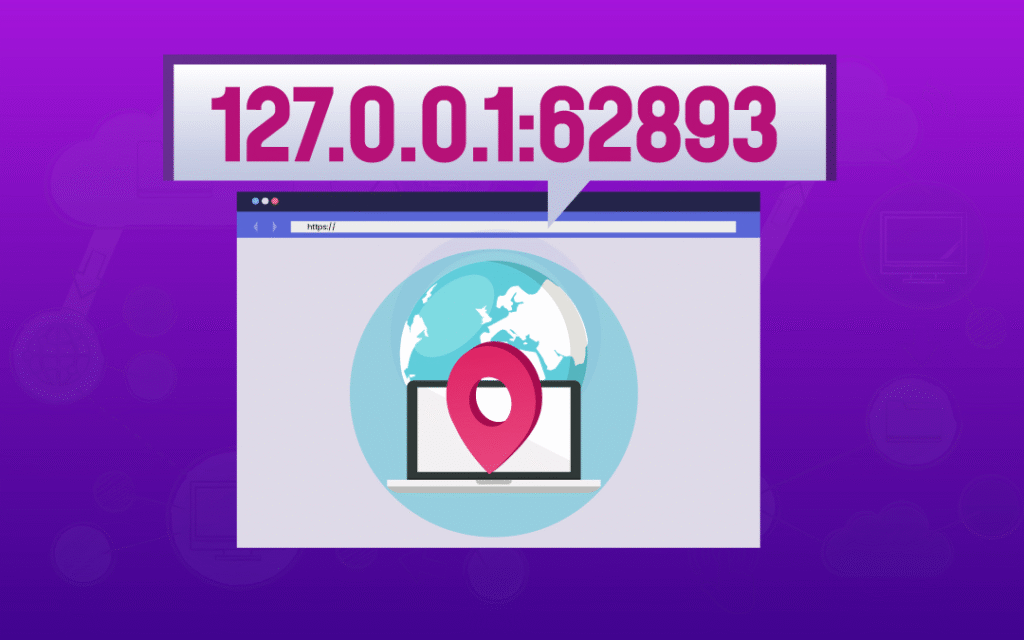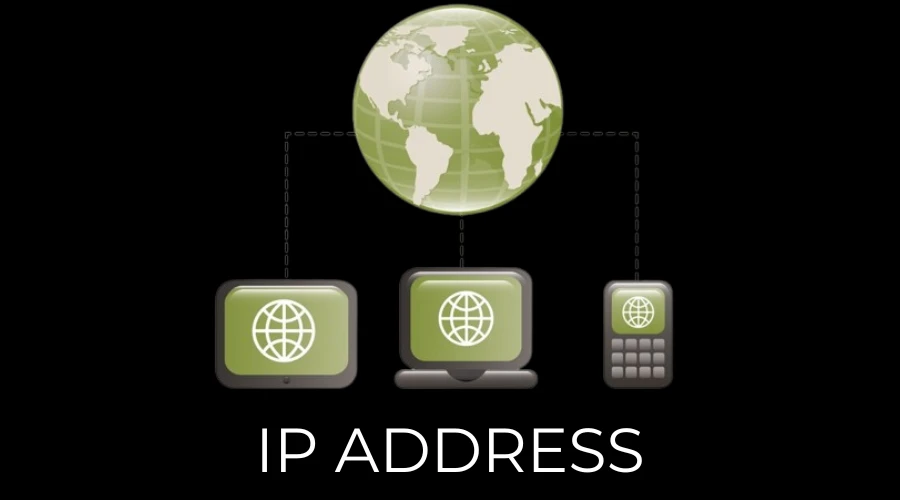In the world of computers and networks, you may come across strange-looking numbers like 127.0.0.1:62893. If you have ever wondered what it means, you are not alone. Many people see this combination and get confused, especially if they are new to technology. In this easy-to-read guide, we will explain everything you need to know about 127.0.0.1:62893, including why it matters, how it works, and why it is important for developers and network users.
We promise to keep it simple, human, and very detailed so that anyone, even with basic English, can understand it clearly.
What is 127.0.0.1?
The number 127.0.0.1 is called a loopback address. It is a special IP address that points back to your own computer. Think of it as your computer talking to itself. When you use 127.0.0.1, you are not connecting to another computer on the internet or even in your home. Instead, you are connecting back to the same machine you are working on.

IP Location
This address is very useful when developers or network engineers want to test things without going online. It is like having a private playground where you can try things safely without involving the outside world. The loopback address helps software developers test websites, apps, and servers before making them public.
What is 62893 in 127.0.0.1:62893?
The number 62893 represents a port. In networking, a port is like a specific door on your computer where information comes in and goes out. Computers use ports to separate different kinds of traffic. For example, if you are browsing a website, using email, and listening to music online at the same time, your computer uses different ports to handle each activity separately.
Also Read:Aiyifan: Transforming the World of Streaming with AI Innovation and Global Entertainment
In 127.0.0.1:62893, the 62893 is the port number. It tells the computer exactly which service or program you are trying to reach on your local machine. If your computer is running several services, the port helps to direct your request to the correct one.
Why is 127.0.0.1:62893 Important?
127.0.0.1:62893 becomes important when developers, testers, or even casual users run applications that communicate internally. Suppose you are developing a website and you want to see how it looks before showing it to the world. Instead of publishing it online, you can run it locally using the 127.0.0.1 address and choose a port like 62893.
This method is safe and secure because no external users can access what you are testing. It helps you fix bugs, test features, and improve the system without risking real-world exposure.
How Does 127.0.0.1:62893 Work?
When you open a service on your computer, like a web server, it often binds itself to an IP address and a port. If your web server binds to 127.0.0.1:62893, it means it is accepting connections only from your own machine, and only through port 62893.
When you open a browser and type in 127.0.0.1:62893, your computer sends a request to itself using port 62893. The service listening on that port responds, and you can interact with it just as if it were a live website.
If no service is listening on port 62893, you will get an error message like “Connection refused” or “This site can’t be reached.”
Why is the Port Number Random Like 62893?
You might wonder why you sometimes see strange port numbers like 62893 instead of standard ones like 80 or 443. The reason is that many applications pick random ports from a wide range of numbers when they are started. This approach avoids conflict with other applications that might already be using common ports.
The range between 49152 to 65535 is known as the dynamic or private port range. The port number 62893 falls within this range, meaning it was likely assigned automatically by the operating system or the application itself.
Also Read:Bobbi Althoff AI Video: What You Need to Know
Choosing a random high-numbered port like 62893 helps developers avoid issues where two applications try to use the same port, causing errors.
Common Uses of 127.0.0.1:62893
127.0.0.1:62893 can appear in many situations. Developers often use it when testing web servers, APIs, or database services locally. It is also common when running tools like Docker containers, local proxy servers, or even gaming servers that need internal communication.
For example, if you are developing a mobile app and it needs a backend server, you might run the server on 127.0.0.1:62893 while you test the app on your phone connected through your computer.
Is 127.0.0.1:62893 Safe?
Yes, using 127.0.0.1:62893 is generally very safe. Since it only allows connections from your own machine, it is protected from external threats. Nobody outside your computer can access what you are hosting on 127.0.0.1 unless you configure your machine to allow it, which usually requires special steps.
However, you should still be careful when running unknown programs that listen on random ports. Always make sure you trust the applications you are using, even when working locally.
Can I Change the Port Number from 62893?
Absolutely. In most cases, you can configure your application to use a different port number if you wish. Developers often set the port manually to avoid conflicts with other running services or to meet specific project needs.
If you see 127.0.0.1:62893 and want to change it to, say, 127.0.0.1:3000, you can usually do so by editing the application’s settings or startup command.
Also Read:Keeper Standard Test: A Complete Guide
Changing ports can be helpful, especially when you need to run multiple services at the same time on your machine.
Troubleshooting Problems with 127.0.0.1:62893
Sometimes things do not go as planned when using 127.0.0.1:62893. If you face problems connecting, there are a few things you can check.
First, make sure the service you are trying to reach is actually running. If no program is listening on port 62893, the connection will fail.
Second, check your firewall settings. Sometimes, firewalls block even local connections by mistake, which could prevent access to 127.0.0.1:62893.
Third, ensure no other application is already using port 62893. Two applications cannot listen on the same port at the same time. You might need to stop the other application or change the port number.
Real-Life Examples of 127.0.0.1:62893
A simple example is a developer building a new blog website. They might install a local server like Node.js or Django and run it on 127.0.0.1:62893. They open their browser and type http://127.0.0.1:62893 to see their blog as they develop it.
Another example is when using tools like Postman to test APIs. The developer might send requests to 127.0.0.1:62893 where their local API server is running, making sure everything works perfectly before pushing it online.
In gaming, sometimes multiplayer servers are run locally during development. Players or testers might connect through 127.0.0.1:62893 to test the game before it goes public.
Advanced Insights into 127.0.0.1:62893
If you dig deeper, you will find that working with 127.0.0.1:62893 can involve advanced network settings like binding IP addresses, configuring proxies, and using tunneling software. For example, you might tunnel traffic from 127.0.0.1:62893 to an external server using tools like Ngrok, allowing others to temporarily access your local project securely.

Understanding how localhost addresses like 127.0.0.1 work gives developers and engineers greater control over how they test and deploy their applications.
How 127.0.0.1:62893 Fits into Web Development Workflows
In modern web development, using local addresses is a critical part of building high-quality apps. Tools like React, Vue.js, and Angular often start local servers on addresses like 127.0.0.1:62893 during development.
Also Read:Alaya AI: The Future of Decentralized Data for Artificial Intelligence
Developers can quickly make changes, refresh the page, and see the updates immediately. This fast feedback loop makes building websites and apps much faster and more efficient.
Later, when the app is ready, developers move it from 127.0.0.1:62893 to a real domain name on the internet where users around the world can access it.
Security Considerations When Using 127.0.0.1:62893
While 127.0.0.1:62893 is naturally secure because it only listens locally, you still need to practice good security habits. Make sure no sensitive data is exposed even on local servers. Use strong passwords for admin pages, even when testing.
If you ever expose your local machine to the internet using tunnels or other tricks, always ensure proper security measures are in place to avoid attacks.
The Future of 127.0.0.1 and Localhost Ports
The use of 127.0.0.1:62893 and similar addresses is not going away anytime soon. As software development grows and more people build things from home, the need for safe, local testing environments remains strong.
New technologies might change how we interact with local servers, but the core idea of 127.0.0.1 and ports like 62893 will continue to be an important part of computing.
FAQs about 127.0.0.1:62893
What does 127.0.0.1:62893 mean?
It means you are connecting to your own computer (127.0.0.1) through port 62893.
Is it safe to use 127.0.0.1:62893?
Yes, it is very safe because it only allows connections from your own machine.
Why is the port number 62893 used?
It is likely automatically chosen from the dynamic range to avoid conflicts with other ports.
Can I change the port from 62893?
Yes, you can usually configure your application to use a different port if needed.
What if 127.0.0.1:62893 is not working?
Check if your service is running, the port is free, and your firewall is not blocking the connection.
Can someone hack me through 127.0.0.1:62893?
No, not unless you expose your local server to the outside world, which is rare during normal use.
What programs use 127.0.0.1:62893?
Web servers, database servers, local APIs, development servers, and sometimes gaming servers use it.
Conclusion
In the end, understanding 127.0.0.1:62893 gives you a powerful insight into how computers communicate internally. It shows how important local addresses and port numbers are for testing, building, and running applications safely on your own machine. Whether you are a beginner learning about web development or an experienced engineer setting up complex systems, recognizing the role of 127.0.0.1:62893 can help you work faster, safer, and smarter.
This address and port combination acts like a private doorway into your own computer, letting you test projects without exposing them to outside risks. Although the port number 62893 may seem random, it serves an important purpose by ensuring smooth and conflict-free communication between different services on your device.
As technology grows and the need for secure development environments increases, the basic idea behind 127.0.0.1 and local ports will remain essential. Mastering this simple concept prepares you for larger challenges in networking, programming, and cybersecurity.
By keeping this knowledge in your toolkit, you are one step closer to becoming more confident and skilled in handling computer networks, software development, and system management.
